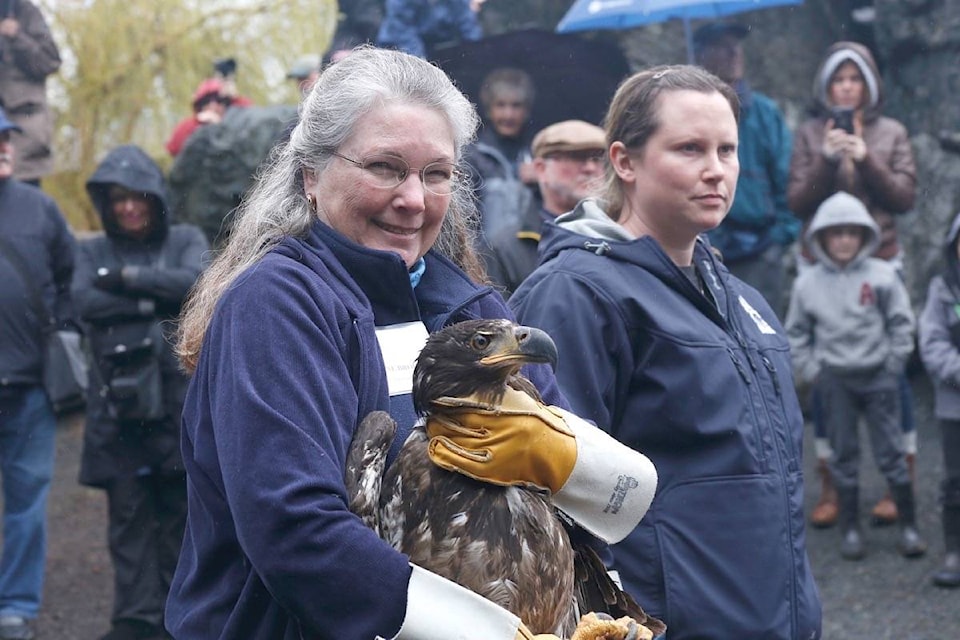Cheers rang out for the Deep Bay eaglet — a formerly flightless young eagle — as it left the embrace of Lynne Brookes and flew out into the wild.
The annual eagle release by the North Island Wildlife Recovery Association took place on Saturday, April 8 as part of the Brant Wildlife Festival.
This particular eaglet came to NIWRA from the Deep Bay area in July of 2016, said Julie Mackey, NIWRA’s wildlife manager.
“He was actually found out of the nest a little bit too early,” she said. Young eagles often leave the nest when they are still clumsy flyers, but from time to time they leave much too early, leaving their parents to care for them.
In this case, the parents were nowhere to be found, said Mackey.
“We get a number of young every year that we have to raise from the fledgling state to the time they are ready to fly,” she said.
“And actually (this eaglet) had been found in somebody’s yard. He had become entangled in their fence.”
The eagle, a juvenile bald eagle still too young for the trademark white feathers, began its road to recovery with plenty of nutritious food to start, Mackey said.
“Then we moved him to a flight pen in our intensive care area for about a month or so, with low perching and enough space that he could sort of practice his flying. And then I think it was near the end of August we moved him into our large flight cage with a group of other youngsters, where he could fly fully and be with a group of eagles.”
NIWRA is careful not to get too familiar with the eagles they care for, so as to keep the birds from imprinting on them, and have them as ready to re-enter the wild as possible.
Keeping the birds with other eagles is important for their eagle education, which includes socializing, learning to fly and to rip up food.
The Deep Bay eaglet was chosen for the public release because it was ready, and it was found not too far from the wildlife recovery centre, whereas other eagles are released back into the area they were found.
But it’s anyone’s guess what an eagle will do when it’s released.
“Some of them will take off and fly, and just soar around. Some of them will land on a nearby fencepost and look back at you and sit there for five minutes before they take off,” said Mackey.
“But as long as they get off the ground and find a perch in a tree or whatnot, then we’re pretty confident that they are going to do well.”
This year, NIWRA volunteer Lynne Brookes was chosen to physically release the eagle.
Though she had participated in the release of other animals, this was her first eagle, she said, adding that she was very excited.
At about 2 p.m., Brookes came up to the crowd of more than 50 people, the Deep Bay eaglet in her arms.
She toured the young bird around before placing him on the ground, watching him beat his wings and quickly fly off towards a set of nearby trees.
“That was amazing,” Brookes said after the release, adding that she had told the eagle, “’I don’t know who’s heart is beating faster, yours or mine.’”
